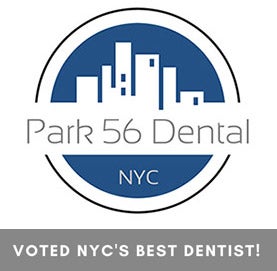Invisalign and Headaches: Is There a Connection?
Praised for their aesthetic appeal and convenience, Invisalign aligners have become a popular choice for individuals seeking to straighten their teeth without the noticeable appearance of metal braces. Despite their many benefits, some users have reported experiencing headaches during their Invisalign treatment. This raises the question: is there a connection between Invisalign and headaches? Whether you are currently using Invisalign or considering it as a treatment option, understanding the possible connection to headaches can help you make informed decisions about your oral health and overall well-being.
What Causes Headaches?
Headaches are a common ailment with a wide range of causes. General triggers include stress and tension, which can result from various daily pressures, leading to tension headaches characterized by a dull, aching sensation around the head and neck. Sinus issues, such as congestion or infections, can also cause headaches due to the increased pressure in the sinus cavities. Migraines are another prevalent type of headache, often accompanied by symptoms like nausea, light sensitivity, and severe throbbing pain, with triggers that can include certain foods, hormonal changes, and environmental factors.
In addition to these general causes, dental-related issues can also contribute to headaches. Bite alignment problems, for example, can place undue stress on the jaw muscles and TMJ, leading to discomfort and headaches. Similarly, tension in the jaw muscles, whether from clenching, grinding, or TMJ disorders, can result in headache pain that radiates from the jaw to other areas of the head. Understanding these common causes of headaches is essential for identifying and addressing the specific factors that may be contributing to headaches in individuals undergoing Invisalign treatment or any other dental procedures.
Possible Links Between Invisalign and Headaches
When starting Invisalign treatment, users often go through an adjustment period where they experience discomfort and pressure on their teeth and jaw as the aligners begin to move the teeth. This initial pressure can lead to tension in the jaw muscles, potentially causing headaches, especially during the first few days of wearing a new set of aligners.
Invisalign works by gradually shifting teeth into new positions, which can temporarily alter the bite and affect how the upper and lower teeth come together. These changes in bite alignment can place additional strain on the jaw muscles and the temporomandibular joint (TMJ), possibly leading to headaches or worsening existing TMJ-related pain.
The process of adapting to wearing aligners can also cause psychological stress for some users, particularly if they feel self-conscious about the aligners or find them uncomfortable. This stress can contribute to muscle tension and overall discomfort, manifesting as headaches. Additionally, some users may unconsciously clench their jaw or grind their teeth (a condition known as bruxism) in response to the sensation of the aligners in their mouth. This increased muscle activity can lead to tension headaches, especially if clenching or grinding occurs frequently or with significant force.
Other factors may also play a role in the connection between Invisalign and headaches. Existing dental issues, such as cavities or gum disease, could be exacerbated by the pressure of the aligners, contributing to discomfort and headaches. Poorly fitting aligners or design issues can cause uneven pressure distribution, leading to localized pain and possible headaches.
What Do the Experts Say?
Research on the connection between Invisalign and headaches is still emerging, with studies providing mixed findings. Some research indicates that the pressure exerted by Invisalign aligners during the teeth-straightening process can cause headaches, especially during the initial adjustment period. However, other studies suggest that these headaches are typically mild and temporary, subsiding as patients become accustomed to the aligners. Despite the varying conclusions, there is a general consensus that while Invisalign may cause discomfort leading to headaches in some users, these symptoms are often manageable and diminish over time.
Experts in orthodontics generally agree that while Invisalign can potentially cause headaches, the overall risk is relatively low compared to the benefits of the treatment. Orthodontists emphasize the importance of proper aligner fit and gradual adjustments to minimize discomfort and the likelihood of headaches. They recommend that patients experiencing persistent or severe headaches consult their orthodontist to evaluate the fit of the aligners and make necessary adjustments. Additionally, experts suggest that good oral hygiene, adequate hydration, and stress management can help mitigate the discomfort associated with aligner use.
Overall, while there is some evidence to support a connection between Invisalign and headaches, particularly during the early stages of treatment, most experts believe that these issues can be effectively managed with appropriate care and professional guidance. For patients experiencing headaches, open communication with their orthodontist is crucial to ensuring a comfortable and successful treatment experience.
Call Park 56 Dental
Transform your smile with Invisalign at Park 56 Dental. Since 1997, we’ve provided quality dental care, including prosthodontics and endodontics, to Midtown, Central Park, the Upper East Side, Park Avenue, and surrounding Manhattan areas. Our experienced team offers personalized Invisalign treatments, guiding you through each step of the process. Whether you’re new to orthodontics or looking for a more convenient solution, we’re here to help. Contact us today to learn how Invisalign can give you the smile you’ve always wanted without the hassle of traditional braces. Schedule your free consultation and see how Invisalign can fit into your lifestyle.
RECENT POSTS
categories
- Uncategorized
- Cosmetic Dentistry
- Veneers
- Healthier Teeth
- Teeth Whitening
- Dental Health
- Video
- Dental Emergencies
- Invisalign
- Dental Implants
- Root Canal
- Sedation Dentistry
- Infographic
- Dental Crowns and Bridges
- Dental Anxiety
- Gum Disease
- COVID-19
- Bad Breath
- New York Dentist
- Cut out sugar
- General Dentistry
- Oral Health
- Oral Cancer
- Dry Mouth
- Gum Health
- Toothache
- Dental Sealants
- Cavities
